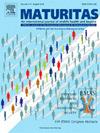Association between leg-to-trunk lean mass ratio measured by dual-energy X-ray absorptiometry and later falls in older Japanese men: the Fujiwara-kyo Osteoporosis Risk in Men (FORMEN) cohort study
IF 3.9
2区 医学
Q2 GERIATRICS & GERONTOLOGY
引用次数: 0
Abstract
Background
Sarcopenia, defined as “decreased lean mass (LM) plus low muscle strength and/or low physical performance,” is associated with a high risk of falls and fractures. Although an association between muscle strength and falls has been reported, the association between LM and falls remains unclear, with previous studies reporting conflicting findings. We investigated the association of LM measured precisely by dual-energy X-ray absorptiometry with later falls in community-dwelling Japanese men aged 65 years or more at the time of the baseline survey.
Methods
The present analyses included 507 older men who provided complete information on LM and falls in the Fujiwara-kyo Osteoporosis Risk in Men cohort study. Whole-body LM and regional LM were measured from 2017 to 2019. LM in each body region, including the legs and trunk, was recorded. The leg-to-trunk LM ratio, calculated as leg LM divided by trunk LM, was also analyzed. Information on falls that occurred in the 12 months prior to the 2022–2023 follow-up survey was obtained.
Results
Mean trunk LM was significantly larger, and mean leg-to-trunk LM ratio significantly smaller, in fallers than in non-fallers (P < 0.05). Multiple logistic regression analysis revealed that leg-to-trunk LM ratio was significantly inversely associated with falls after adjusting for potential confounders (P < 0.05), whereas no significant associations were observed between whole-body and regional LM and falls.
Conclusion
Leg-to-trunk LM ratio was associated with later falls in community-dwelling older Japanese men. Older men with a larger distribution of leg LM relative to trunk LM tended to have a lower risk of later falls.
双能x线吸收仪测量的腿-躯干瘦质量比与老年日本男性后期跌倒之间的关系:藤原-kyo男性骨质疏松症风险(FORMEN)队列研究
骨骼肌减少症,定义为“瘦质量(LM)下降加上肌肉力量和/或体能低下”,与跌倒和骨折的高风险相关。虽然有报道称肌肉力量和跌倒之间存在关联,但LM和跌倒之间的关联尚不清楚,之前的研究报告的结果相互矛盾。我们调查了在基线调查时65岁以上的日本社区居住男性中,双能x射线吸收仪精确测量的LM与后期跌倒的关系。方法本研究纳入了藤原京男性骨质疏松风险队列研究中提供完整LM和跌倒信息的507名老年男性。2017 - 2019年测量全身LM和局部LM。记录包括腿部和躯干在内的每个身体区域的LM。分析了腿与躯干的LM比,计算为腿LM除以躯干LM。获得了在2022-2023年随访调查之前的12个月内发生的跌倒信息。结果跌倒组平均躯干LM显著大于非跌倒组,平均腿/躯干LM显著小于非跌倒组(P <;0.05)。多元逻辑回归分析显示,在调整潜在混杂因素后,腿部与躯干的LM比与跌倒呈显著负相关(P <;0.05),而全身和局部LM与跌倒之间没有显著关联。结论在日本社区居住的老年男性中,下肢与躯干的LM比例与后期跌倒有关。与躯干LM相比,腿部LM分布更大的老年男性后期跌倒的风险更低。
本文章由计算机程序翻译,如有差异,请以英文原文为准。
求助全文
约1分钟内获得全文
求助全文
来源期刊

Maturitas
医学-妇产科学
CiteScore
9.10
自引率
2.00%
发文量
142
审稿时长
40 days
期刊介绍:
Maturitas is an international multidisciplinary peer reviewed scientific journal of midlife health and beyond publishing original research, reviews, consensus statements and guidelines, and mini-reviews. The journal provides a forum for all aspects of postreproductive health in both genders ranging from basic science to health and social care.
Topic areas include:• Aging• Alternative and Complementary medicines• Arthritis and Bone Health• Cancer• Cardiovascular Health• Cognitive and Physical Functioning• Epidemiology, health and social care• Gynecology/ Reproductive Endocrinology• Nutrition/ Obesity Diabetes/ Metabolic Syndrome• Menopause, Ovarian Aging• Mental Health• Pharmacology• Sexuality• Quality of Life
 求助内容:
求助内容: 应助结果提醒方式:
应助结果提醒方式:


